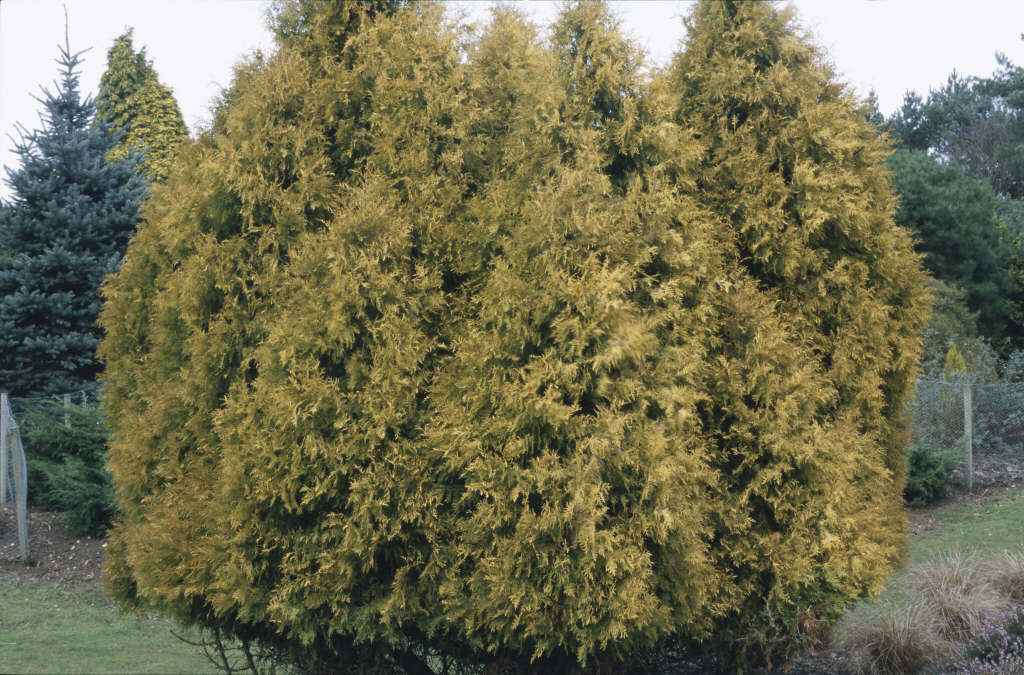Thuja occidentalis 'Rheingold'
white cedar 'Rheingold'
A slow-growing bushy evergreen conifer making a medium-sized shrub of ovoid outline. Bronze-tinged, amber-yellow foliage, becoming more richly-coloured in winter
Size
Ultimate height
1–1.5 metresTime to ultimate height
10–20 yearsUltimate spread
0.5–1 metresGrowing conditions
Moisture
Moist but well–drainedpH
Acid, Alkaline, NeutralColour & scent
| Stem | Flower | Foliage | Fruit | |
| Spring | Bronze Orange Yellow | |||
|---|---|---|---|---|
| Summer | Bronze Orange Yellow | |||
| Autumn | Bronze Orange Yellow | |||
| Winter | Bronze Orange Yellow |
Position
- Full sun
Aspect
South–facing or East–facing or West–facing
Exposure
Exposed or Sheltered Hardiness
H7Botanical details
- Family
- Cupressaceae
- Native to GB / Ireland
- No
- Foliage
- Evergreen
- Habit
- Bushy
- Potentially harmful
- Harmful if eaten, skin allergen. Wear gloves and other protective equipment when handling
- Genus
Thuja are fast-growing evergreen trees of narrowly conical habit, with flat sprays of tiny, aromatic, scale-like leaves and small knobbly cones
- Name status
Accepted
How to grow
Cultivation
Grow in moist but well-drained soil. Protect from drying winds especially when young
Propagation
Propagate by semi-hardwood cuttings
Suggested planting locations and garden types
- Architectural
- City and courtyard gardens
- Patio and container plants
- Cottage and informal garden
- Rock garden
- Low Maintenance
- Flower borders and beds
Pruning
No pruning required
Pests
May be susceptible to scale insects and conifer aphid
Diseases
May be susceptible to honey fungus and other fungal diseases, particularly thuja blight and Coryneum canker (see conifers: brown patches)
Get involved
The Royal Horticultural Society is the UK’s leading gardening charity. We aim to enrich everyone’s life through plants, and make the UK a greener and more beautiful place.
